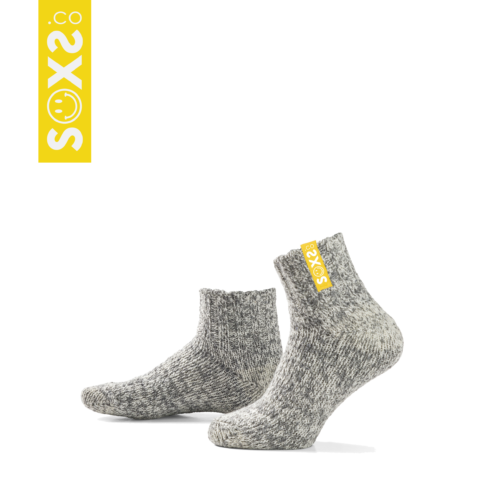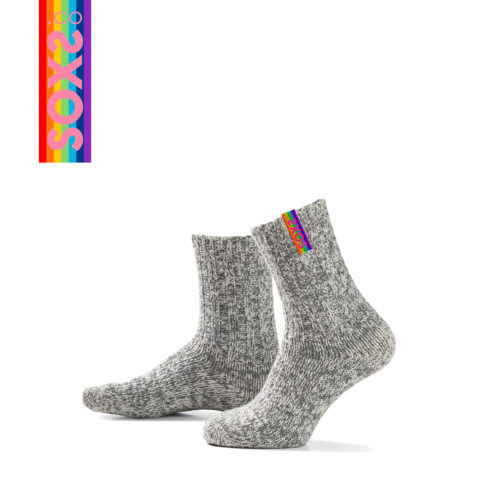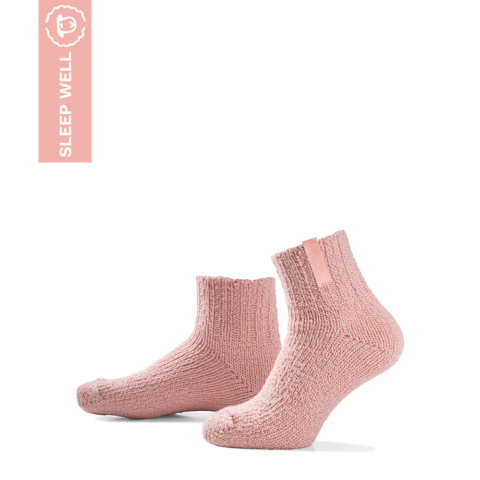Soft warm premium wool socks
Gift ready, stylishly packaged
Orders placed before 1:00 PM will be shipped today (on weekdays) PLEASE NOTE: The delivery time of Pimp My Soxs is 5 working days!
Comfort plays an essential role when you’re recovering from illness or injury. Wool socks provide the warmth and support your feet need during this important time. Their natural properties make them both comfortable and sustainable – a practical addition to your recovery process. These quality socks offer reliable comfort when you need it most.
Recovery requires attention to comfort, and wool socks deliver with their natural warmth and temperature regulation. Your feet stay comfortably warm without overheating, which is particularly beneficial if you have limited mobility or poor circulation during recovery.
Modern wool socks are soft and gentle on the skin, unlike traditional wool that often caused itching. This makes them suitable even for those with sensitive skin or allergies. They make a thoughtful socks gift for someone recovering – practical comfort that shows you care.
Quality wool socks start with carefully selected organic wool from sustainable farms. The wool undergoes special processing to remove the irritating scales typically found on wool fibers. This preserves the natural benefits of wool – breathability and insulation – while creating a comfortable wearing experience.
The natural elasticity helps these socks maintain their shape over time, providing consistent comfort. This durability aligns with environmentally friendly socks practices by extending the product lifespan. You get therapeutic wool benefits without the discomfort.
Wool socks offer several benefits that support healing. The natural fibers help stimulate blood flow, which can assist recovery after surgery or injury. This improved circulation contributes to overall foot health.
The moisture-wicking properties of wool keep your feet dry and comfortable, reducing the risk of skin irritations. This is particularly valuable if you have limited mobility. Additionally, wool’s natural antibacterial qualities prevent odors, keeping your socks fresh even with extended wear.
Finding suitable wool socks involves considering your specific needs. Look for certified organic wool socks that are itch-free for maximum comfort. The material blend matters – quality wool with a small percentage of elastic ensures a comfortable fit that’s not restrictive.
Your recovery situation affects the best choice. At-home recovery might call for extra warm socks with cushioning, while those resuming light outdoor activities may prefer outdoor wool socks with enhanced durability. Always check sizing to ensure proper support without constriction.
Wool offers unique advantages over other materials through its combination of comfort, durability, and sustainability. Unlike cotton socks, wool provides superior insulation to keep feet warm in cooler environments. The natural moisture-wicking capabilities outperform synthetic materials, which often trap sweat against your skin.
From an environmental perspective, wool is a renewable resource. When responsibly sourced, it contributes to sustainable sock production – unlike synthetic fibers that typically require petroleum-based manufacturing. Choosing wool socks supports both your comfort and environmental responsibility.
Proper care extends the life of your wool socks. Wash them by hand or in a washing machine on a gentle cycle with wool-specific detergent. Avoid high temperatures and aggressive spinning that can damage the fibers. Air drying helps maintain the material’s integrity.
For ongoing maintenance, use a wool comb to remove any pilling that develops with wear. This simple step keeps your socks looking and feeling their best throughout your recovery journey.
Many patients have found wool socks beneficial during recovery. Sarah, who recovered from foot surgery, appreciated how her wool socks provided warmth and support during rehabilitation exercises.
Mark found the moisture-wicking properties particularly helpful during physical therapy for his knee injury, as they kept his feet dry and prevented blisters. These experiences highlight how quality wool socks can enhance comfort during the recovery process.
Which recovery situation would wool socks help you with? Discover our full collection of sustainable wool socks at soxs.co.

Ankle height

Calf height

Ankle height